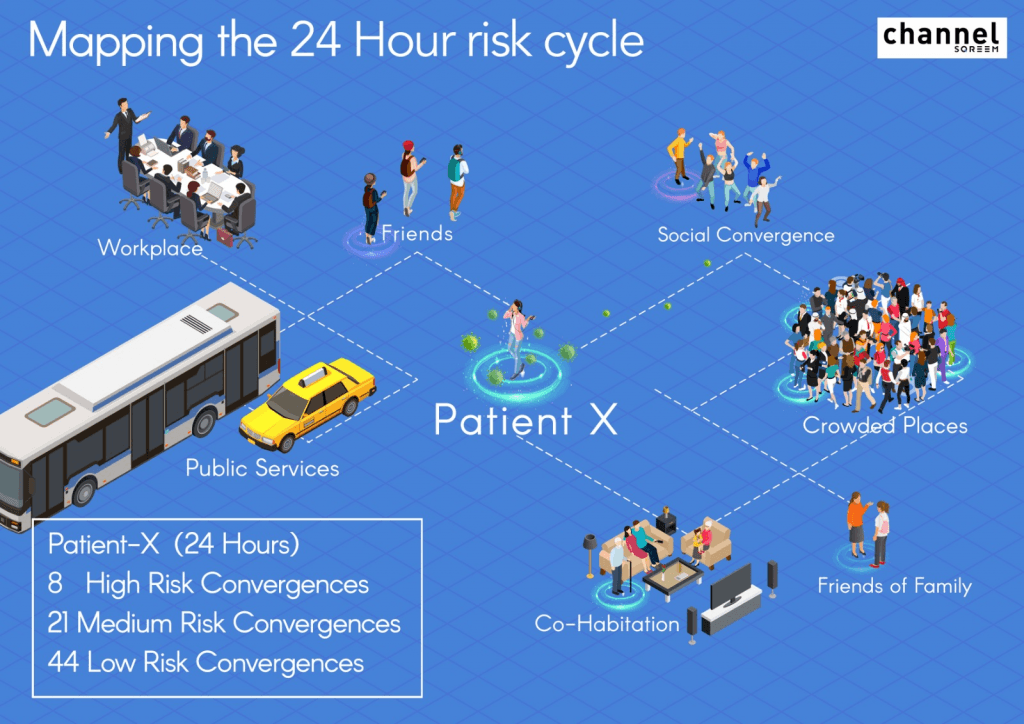With an accuracy level of 90% that increases over time, the platform can be customized for any government in mere days.
In the current pandemic, contact tracing challenges abound globally, where each country’s unique geography and social structures can aid or hamper efforts to contain the speed of COVID-19.
Now, a platform design to exploit AI to track behavior in the digital advertising world has been repurposed to help governments track the spread of the SARS-CoV-2 virus.
Already in use by the South African government since early March, the platform was built to assist governments with AI-driven contact tracing and direct engagement with people who are potentially at risk of having contracted COVID-19.
The company that developed Channel SQREEM, Singapore AI solutions firm SQREEM Technologies, has made the solution immediately available for use by government agencies.
As a real-time contact tracing and communication system, the SQREEM COVID Tracing platform functions as a proximity locator that does not infringe on an individual’s privacy. It does not require users to download an app for their devices. Data on the platform is handled strictly by the government agencies, while SQREEM works as the platform provider and does not at any point have access to the data.
Ian Chapman-Banks, co-founder and CEO of SQREEM, said: “In order for citizens across the world to return to normal life, a reliable COVID-19 tracking system needs to be in place to ensure communities remain safe and protected. The system needs to be accurate, nationwide, and at the same time, in no way infringe on individual privacy.”
Tracing virus transmission with the power of AI
Once a person is found to have tested positive for COVID-19, the health authorities will run the home and office address of the individual through its platform, which would apply AI and machine learning models to automatically determine how many other devices had meaningful risky contact with the carrier over the past 14 days.

Dividing the country into areas such as five square-metre blocks, the solution monitors the time and speed of every device that enters and leaves each block in real-time, 24/7, over a two-week period.
Each one of these at-risk devices is identified and located utilizing the SQREEM AI engine. Each country’s health authority is then able to send targeted messages to each device, without having to identify the device owner, their phone number or their personal information.
The implementation could include calls-to-action such as asking people to contact the authorities for further instructions. Health messages can also be delivered in a variety of ways: through ads placed on the next website visited on the device, or though ads on social media platforms like Facebook, or other apps that the person already uses. The message can also be delivered to a cluster within a proximity area rather than to an individual.
If the need arises, a government agency may work with the national telcos to match the device ID to a nationally-registered phone number to call or SMS the owner of the device directly and privately, but this is at the discretion of each government.
In addition to the aforementioned capabilities SQREEM’s behavioural data capabilities and pattern analysis are able to fuse locational and other digital activity into unified profiles through examining hundreds and thousands of online data points. This allows the solution to identify potential new infection clusters. For example, if multiple individuals within an apartment block are conducting web searches for symptoms such as coughs or sore throats, the system would automatically interpret the data and flag the apartment block as a potential new cluster. Health authorities can then be alerted.
The SQREEM solution can be adapted for various countries in mere days. Currently it has an accuracy of 90%, and like other AI and machine learning solutions, the accuracy of Channel SQREEM will continue to rise as the AI continues to learn and optimize its algorithms.
Added Chapman-Banks: “To date, SQREEM’s AI capabilities have been proven in a myriad of scenarios: Assisting governments with tracking criminal activity, predicting global market events, detecting instances of fraud, and assisting multiple firms in the financial sector with their media campaigns. We have leveraged our experience gained from these past successes to further assist governments in the fight with COVID-19.”
